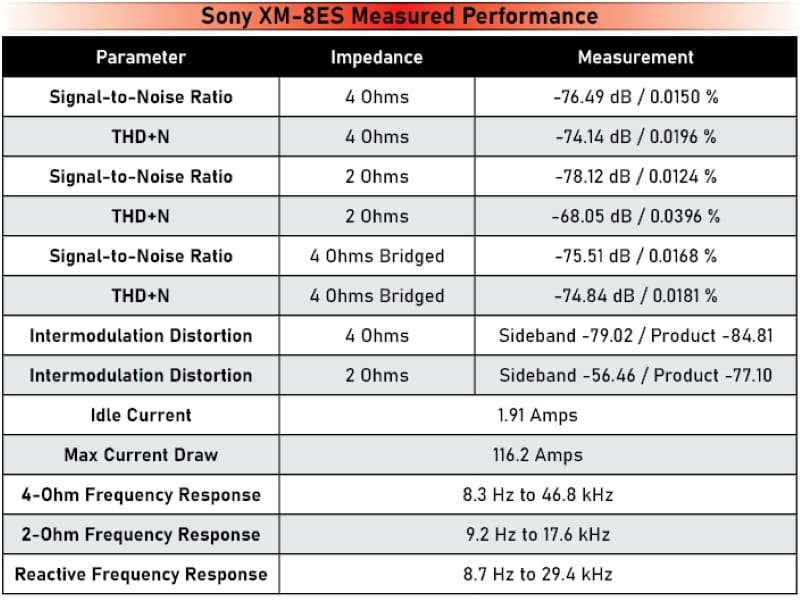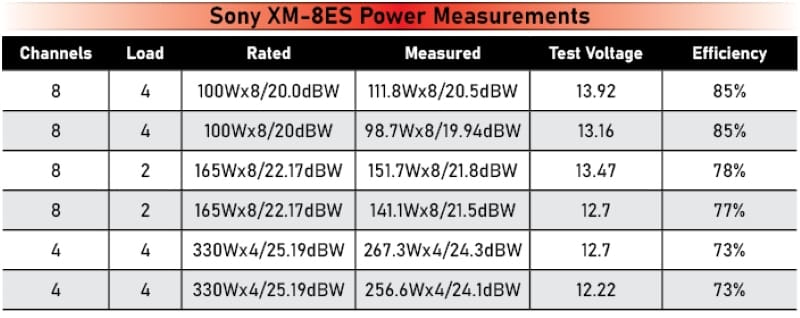We had the opportunity to check out Sony’s Mobile ES monoblock XM-1ES, four-channel XM-4ES and five-channel XM-5ES amplifiers in 2022. All three amps performed well on the test bench and in our listening room. For 2023, Sony has introduced two new amplifiers: the eight-channel XM-8ES and the six-channel XM-6ES. Let’s dive into the XM-8ES in this BestCarAudio.com Test Drive Review.
Sony Mobile ES Eight-Channel Amp Specifications
Sony rates the XM-8ES as capable of producing up to 100 watts of power from each channel when driving 4-ohm loads. That power output increases to 165 watts per channel when driving 2-ohm loads. In addition, each of the four channel pairs can be bridged to produce 330 watts into 4-ohm loads. This gives us a total continuous power output capability of 1,320 watts. In keeping with the CTA-2006-D specifications, these ratings consider all channels driven simultaneously to full power, not the woofer, mid and tweeter that some companies use to inflate their ratings.
As you’re likely well aware, Sony is a proponent of Hi-Res Audio. As such, the XM-8ES amplifier specifies having a bandwidth of 10 Hz to 40 kHz to optimize the high-frequency capabilities of modern recordings. The signal-to-noise ratio is specified as greater than 76 dB using the CTA-2006-D standard of referencing 1-watt output into a 4-ohm load. When referenced to full power, the SNR jumps to 100 dB. Total harmonic distortion is less than 0.05% into 4 ohms. There is no total harmonic distortion plus noise spec provided on the Sony website or in the owner’s manual.
Sony XM8-ES Features and Design
The XM8-ES is based on the same cast aluminum heatsink as the five-channel XM-5ES. As such, it measures 15 inches wide, 8.5 inches deep and 2.38 inches tall. All the speaker, power and signal connections are made along the front edge of the amp to keep the installation tidy. Input channel mixing, crossover and sensitivity controls are on the amp’s top panel. A removable cast aluminum panel conceals the adjustments after the installation is complete. The trim piece in the center of the heatsink can be removed and rotated 180 degrees to align the Mobile ES logo with your installation.
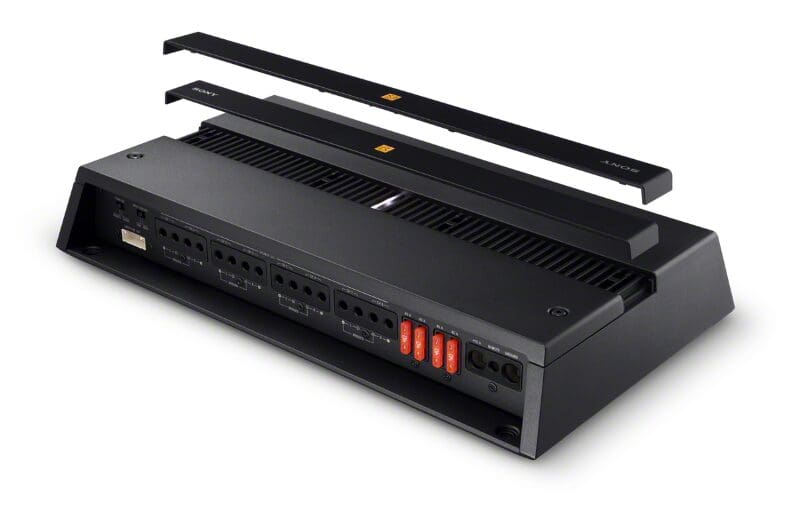
The front panel on the amp has a large power connection block on the right side that can accept 1/0 AWG power and ground cables. The four sets of stereo speaker wire terminals for each pair of channels will take 8 AWG cables and measure 0.219 inch across. All five connectors work with commonly available wire ferrules, should your installer choose to use them. Conveniently, the set screws also use the same 2.5-mm hex driver. Your installer won’t have to switch tools during the installation.
On the far left side of the panel is a switch that enables the remote turn-on detection function. Beside it is a switch to change the RCA input voltage range from 0.2 to 8 volts up to 3 to 16 volts. This switch indicates that the RCA inputs include differential circuitry, meaning they will eliminate noises picked up on both conductors of an RCA cable. As such, you will want to use twisted-pair cables with this amp whenever possible.
You’ll notice that there are no RCA jacks directly on the amp’s chassis. One of the biggest challenges in designing an amplifier is finding space for all the connections and features the product development team wants to include. In this case, the four four-position speaker blocks took up all the space on the end panel. As a solution, Sony includes a set of RCA pigtails on a plug to make the RCA connections. The alternative would have been to make the amp several inches longer, dramatically increasing the heatsink cost and reducing the mounting location options. The RCA pigtail is 1 foot long, allowing your installer to run it through or around a panel to keep the RCA connections out of sight for a more professional-looking installation. Finally, four 40-amp ATC fuses are on the front panel to protect the amp if someone wires the power connections backward.

Signal Processing and Integration Features
Each pair of channels has a dedicated stereo sensitivity control, a crossover function control switch and two crossover setting potentiometers. A crossover function control switch allows your installer to bypass the crossovers altogether, use only the high-pass or the low-pass filters, or use both crossovers simultaneously to create a bandpass design for a door woofer or midrange speaker. The crossovers are adjustable from 50 to 500 hertz or 500 hertz to 5 kHz when the range switch is set to the times 10 (x10) mode. It’s important to note that the range switch simultaneously changes the high- and low-pass filter frequencies. As such, you can’t set a high pass filter at 80 Hz and a low pass at 4 kHz. If that’s your plan, you’ll need to use a head unit like the XAV-9000ES or XAV-9500ES with electronic crossovers.
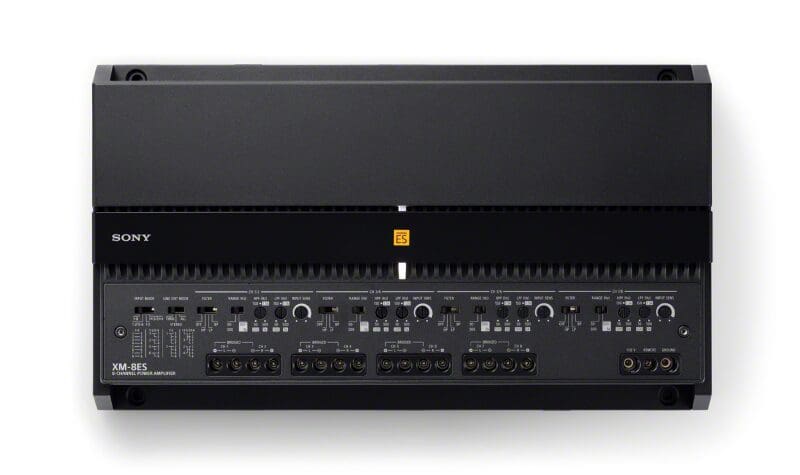
The Sony product development team has put serious effort into system configuration options on this amplifier. The Input Mode switch on the far left side of the top panel includes four signal routing and mixing options. Depending on the settings, each input RCA can directly feed each output channel, or there are three combinations where two or four input connections feed all the outputs. The Line-Out switch allows your installer to select from several signal source options to send the audio signal out to another amplifier.
As mentioned, this amplifier can produce a significant amount of power. The power terminals on the right side of the front panel have a diameter of 0.411 inch and can accept 0 AWG cables. If your audio system design uses 2-ohm speakers in stereo or the channels on the XM-8ES are bridged, the current demands, though efficient, will exceed what 4 AWG cable can deliver efficiently. We suggest 2 AWG as a minimum, but larger is always better.
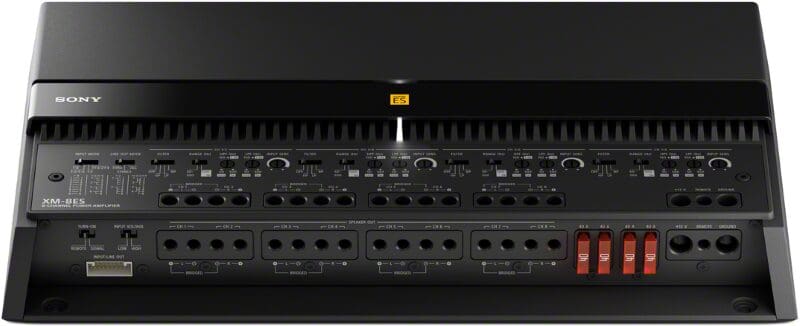
Internal Design and Components
The bottom panel of the XM-8ES is heavy-gauge stamped steel that’s impressively rigid. This panel prevents buzzing or rattling from road or subwoofer system vibrations.
Looking inside the amplifier, the first thing that jumps out is the dual power supply design. Each supply starts with four Rubycon 16-volt, 2,200-microfarad capacitors and large ferrite-core inductors. This filter network is crucial as it prevents noise from the switching devices from feeding back out the power leads and interfering with other devices in the audio system. Each supply uses six surface-mount Toshiba K90S06N1 N-Channel 90-amp, 157-watt MOSFETs to switch the incoming current to feed the toroidal transformer. A total of 20 50-volt, 800-microfarad caps serve as filtering and energy storage on the plus and minus 36-volt rails.
Each channel has a dedicated IRS9092S driver IC from International Rectified and a pair of Toshiba N-Channel FETs. A heatsink is bolted across the top of the output devices to improve thermal regulation. Finally, each channel has a high-quality shielded choke to filter the Class D switching and keep electromagnetic interference at bay.
Sony has again gone above and beyond by creating multiple steel support brackets for the circuit boards that stand up from the main board. Many amplifier manufacturers rely on pin headers to support these parts. All Mobile ES series amplifiers share this feature, and it is a perfect example of expert design and not cutting corners.
Overall, the circuit board is exceptionally tidy and uses surface-mount components everywhere possible to increase manufacturing efficiency and value for the consumer.
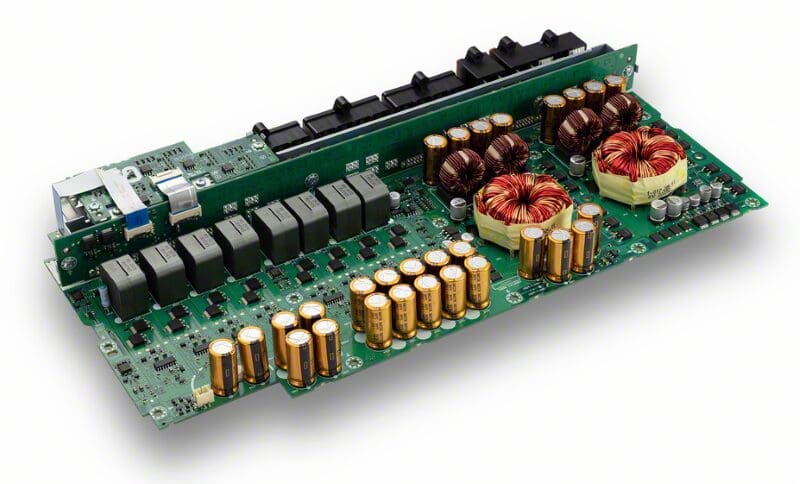
Auditioning the Sony XM-8ES Car Audio Amplifier
I’ve learned the hard way that I should always do my listening evaluations before I make any measurements. Why? If I make a mistake with a test lead and damage an amp, I’m stuck and can’t proceed. Second, not knowing how the amp performs regarding frequency response, noise and distortion characteristics eliminates my chances of listening for any particular element.
I set the amp up in my listening room, fed my bookshelf speakers with channels 1 and 2, and bridged channels 7 and 8 to a 4-ohm 12-inch audiophile-grade subwoofer in a sealed enclosure. After setting the crossovers on the radio to 80 Hz with a -18 dB/octave filter on the radio, I adjusted the output of the subwoofer channel to match my acoustic target response curve.
The first track I sampled was “Wondering Where the Lions Are” by Bruce Cockburn. This track has a super-clean recording. Ensuring the balance between the midbass and subwoofer is smooth is critical for this track to sound right. Through the Sony and my reference speakers, the XM-8ES sounded good and tight. Bruce’s voice was very clear, and the drums panned across the entire soundstage with good positioning.

Up next was Nine Inch Nails’ “Right Where It Belongs.” This track starts with Trent Reznor’s voice filtered to limit the bandwidth – like what you’d hear over the phone or clock radio. With that said, it was still clear and balanced. The muted piano sound was smooth as the notes went up and the down the registers. Just after the three-minute mark, the processing on Trent’s voice stops, and the vocals become more intimate and fuller. The sound of the live audience behind the performance filled the soundstage nicely. The Sony XM-8ES amplifier had no problem making this track sound good.

The next track was “Fishies” by The Cat Empire. This was the first time I’d heard the band. The recording is very clean, with tight drums, bass and vocals. They remind me a bit of the Mighty Mighty Bosstones. This is the kind of music that makes you tap your foot and turn the volume up. Since the XM-8ES has many channels, I switched the wiring so the left speaker was bridged on channels 1 and 2 and the right was bridged on 3 and 4. After resetting the target system response, I went back to this track. Wow! The focus of each performer was much tighter and more realistic. There was an added sense of depth to the experience. Very cool! The improvement seems attributable to improved stereo separation rather than increased available power. My linear power supply in the listening room can only produce about 50 amps of current, so I was nowhere near the amplifier’s upper limits.

The last track was “Das Speigel” by The Chemical Brothers from the album We Are the Night. No amplifier audition would be fun without rocking out to a track with a great bassline. The XM-8ES was rock solid with good control and impact. The synthesized effects in the music panned nicely across the soundstage with good focus. The deep bassline filled the experience well without overpowering the track.

I give a solid thumbs-up for the listening evaluation. The XM-8ES is solid and controlled; nothing stands out regarding frequency response or distortion. That’s the sign of a good design! Let’s head to the lab to see how the Sony XM-8ES measures.
Sony XM-8ES Lab Measurements
I started the lab testing with distortion analysis. Sony rates the amp as producing less than 0.05 THD. I measured under 0.02% THD+N, which is much better. That number doubled when the amp powered a 2-ohm load, which is normal. Intermodulation distortion numbers were good for the 1-kHz product of the 19- and 20-kHz test tones, but the sidebands were a touch higher and more filled in than I’d hoped. Not a disaster, though. The signal-to-noise measurements were solid. Nothing stood out as a problem.
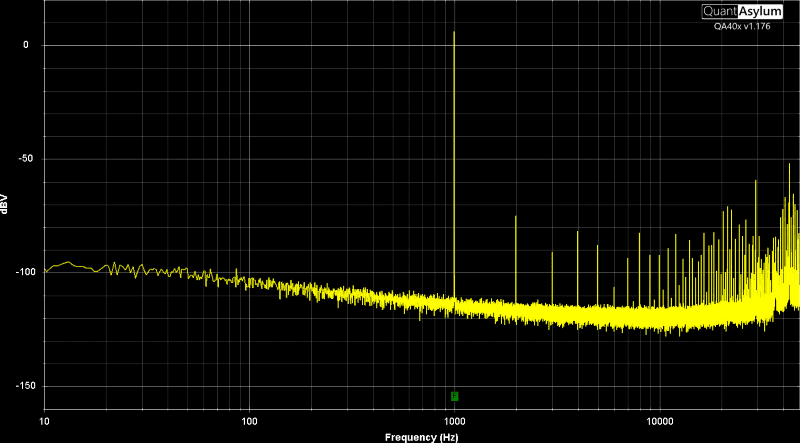
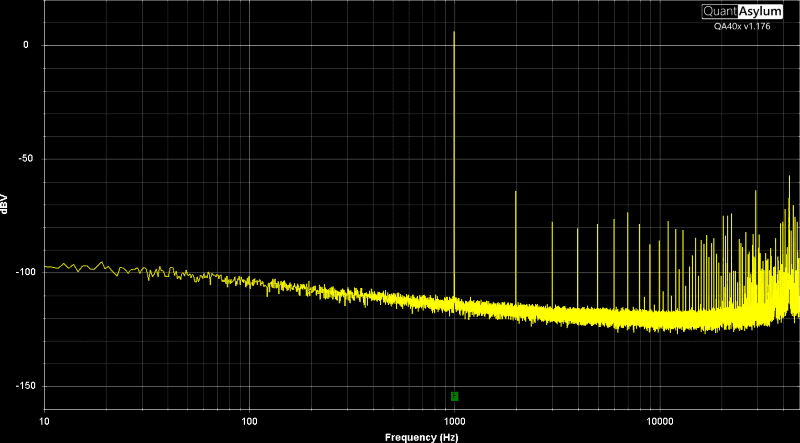
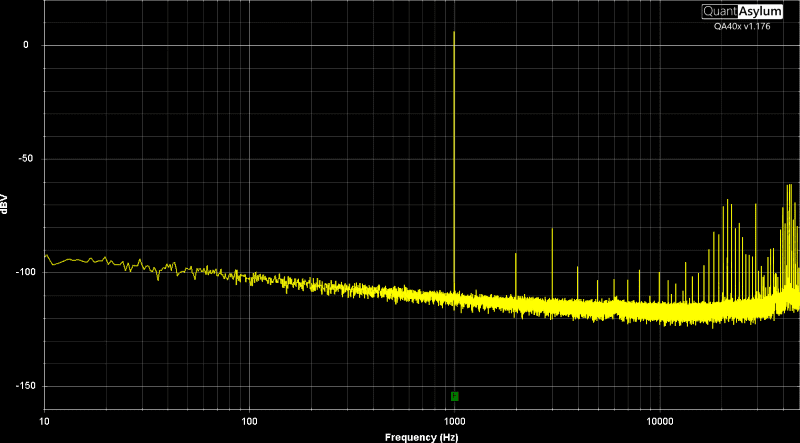
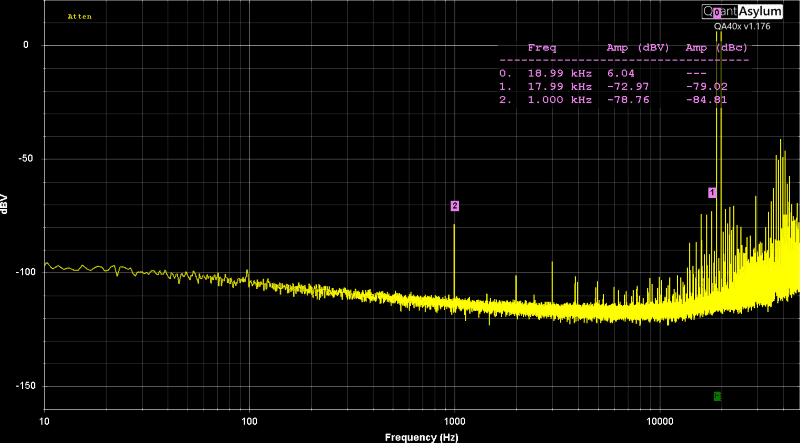
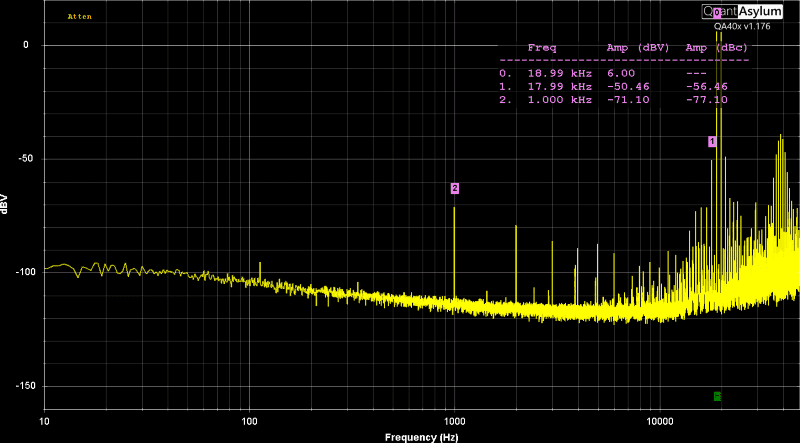
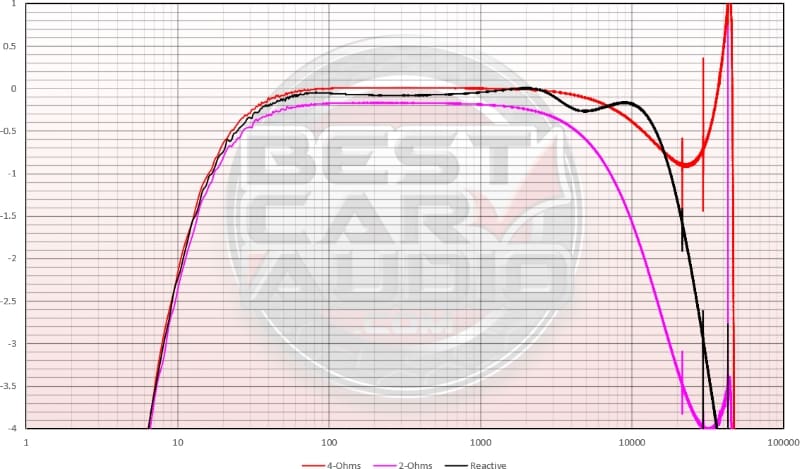
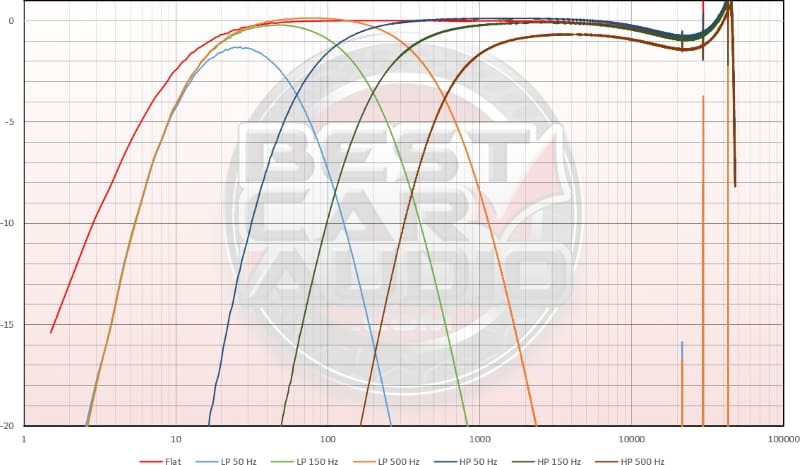
Up next, I took several frequency response measurements. The amp was as expected into a 4-ohm load with a -3 dB bandwidth of less than 10 Hz to the upper limit of the driver IC at just under 47 kHz. This measurement meets the requirement for the Hi-Res Audio moniker. Loaded to 2 ohms, the analog low-pass filter on the output stage added some attenuation, so the bandwidth dropped slightly. This characteristic is, once again, typical behavior for a Class D amplifier design. Finally, I connected the Sony XM-8ES to my simulated reactive load network. The usual few-tenths of a decibel variation in the higher frequencies was present in the output. The bandwidth was good beyond 30 kHz. Nothing at all to complain about!
The last test was to evaluate power production. Why last? Power production has nothing to do with amplifier quality. Power is vital in having enough energy on tap to play your music loudly, but more power doesn’t mean an amplifier is better. Nevertheless, the amp did well on the bench. It exceeded its ratings at 4 ohms and fell short by less than a decibel into 2 ohms. The bridged power ratings are also within 1 dB of the ratings. Keep in mind, Sony tests at 14.4 volts, so it will make more power if you supply it with more voltage. In terms of efficiency, the amp is excellent when driving 4-ohm loads and very good when bridged or driving 2-ohm speakers. A lot of supposedly high-end companies could learn a thing or two from these efficiency numbers.
The amp didn’t produce any audible turn-on or turn-off noises while it was set up in the lab. The cooling fan in the back corner worked well to extract heat and didn’t make a huge racket that would be annoying. Overall, I’m very pleased with the lab performance of the XM-8ES.
Upgrade Your Car Stereo with the Mobile ES Eight-Channel Amplifier Today!
If you’re shopping for an amp to upgrade your car audio system, drop by a local Sony Mobile ES retailer today and ask about the new eight-channel XM-8ES. It would be the perfect amp to power a two-way front speaker set in an active configuration, rear coaxial speakers and a subwoofer. You could also run the three-way XS-163ES component set and a pair of XS-162ES coaxial speakers in the back doors. If you like your music loud, the whole amp feeding the XS-163ES with each 6.5-inch woofer bridged on a pair of channels would be insane! The options are nearly limitless.
To learn more about Sony Mobile ES products, visit their website. You can also follow Sony Car Audio on Facebook to learn more about their products, demo vehicles and the events their marketing team attends.

